List of Depression-era outlaws
This is a list of the Great Depression-era outlaws spanning the years of Prohibition and the Great Depression known as the "Public Enemy" era. Those include, but are not limited to, high-profile criminals wanted by state and federal law enforcement agencies for armed robbery, kidnapping, murder and other violent crime. These are not to be confused with organized crime figures of the same period.
Prohibition and the "Public Enemy" era (1919–1939)
| Name | Portrait | Life | Comments_ |
|---|---|---|---|
| Edward J. Adams | .jpg) |
1887-1921 | Bootlegger, car thief, murderer. After being sentenced to life imprisonment, Adams escaped custody twice. He was killed in a shootout with police.[1][2][3] |
| George "Dutch" Anderson |  |
1879–1925 | Anderson and his associates successfully robbed a US Mail truck in New York City of $2.4 million in cash, bonds, and jewelry.[1][2] |
| John Ashley |  |
1895–1924 | Florida bandit known as the "King of the Everglades". His gang robbed banks and trains, hijacked rumrunners and feuded with police in southern Florida until Ashley's death in 1924.[1][2] |
| Harvey John Bailey | 1887–1979 | Considered one of the most successful bank robbers of the 1920s, Bailey stole over a million dollars. Bailey spent 31 years in prison and died at the age 91 in Joplin, Missouri.[1][2] | |
| Basil "The Owl" Banghart | No image available |
1900–1982 | Basil is best remembered for his involvement in the hoax kidnapping of Chicago mobster Jake "The Barber" Factor, a crime for which he and Roger Touhy were eventually proven innocent after nearly 20 years in prison.[1][2] |
| Lloyd Barkdoll | No image available |
1900–1982 | Oregon bank robber. Sentenced to life imprisonment, Barkdoll took part in an unsuccessful escape attempt with Sam Shockley, Joseph Cretzer and Arnold Kyle from Alcatraz in 1941.[1] |
| Ma Barker | 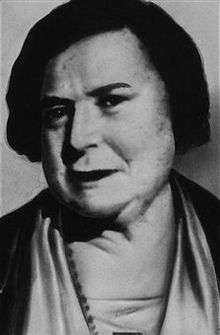 |
1873–1935 | Legendary associate of the Barker-Karpis gang.[1][2] |
| Arthur Barker | 1901–1939 | Member of the Barker-Karpis gang. Son of Ma Barker[1][2] | |
| Fred Barker | 1899–1935 | Member of the Barker-Karpis gang. Son of Ma Barker[1][2] | |
| Blanche Barrow and Buck Barrow |
1911-1988 (Blanche) 1903-1933 (Buck) |
See Bonnie and Clyde. | |
| Clyde Barrow and Bonnie Parker |
 |
1909–1934 (Clyde) 1910–1934 (Bonnie) |
See Bonnie and Clyde.[1][2] |
| Albert Bates |  |
1891–1948 | Bates was the longtime partner of George "Machine Gun" Kelly and participated in the kidnapping of oil tycoon Charles Urschel in 1933.[1][2] |
| Edward Wilheim Bentz | 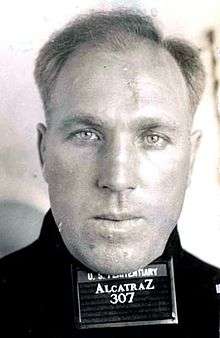 |
1894–1979 | Bentz was an American bank robber and Depression-era outlaw associated with several high-profile public enemies during his criminal career. He was eventually captured by the FBI and sentenced to Alcatraz.[1][2] |
| Joe Bergl | No image available |
1901–1950 | A mechanic for Al Capone, he supplied Capone with custom-made vehicles. The vehicles were designed for protection and evasion purposes and included armor plating, smokescreens, and oil slicks.[1][2] |
| George Birdwell | No image available |
1894–1932 | George Birdwell was an American bank robber and Depression-era outlaw. He was one of the closest known associates of Pretty Boy Floyd.[1][2] |
| Charles Birger | No image available |
1881–1928 | Bootlegger based in the southern region of Illinois. Birger's gang, along with the Shelton Brothers Gang, waged war with each other, and the local Ku Klux Klan throughout the 1920s. |
| Fred William Bowerman | 1893–1953 | Fred William Bowerman was an American criminal, bank robber and Depression-era outlaw, who was eventually placed on the FBI's "Ten Most Wanted" list in 1953. He was a party to the disastrous Southwest Bank holdup in St. Louis, MO, which was later made into a movie The Great St. Louis Bank Robbery.[2] | |
| Ford Bradshaw | No image available |
1908–1934 | Though Bradshaw never attained the fame of fellow Sooner, Oklahoma Charles "Pretty Boy" Floyd, his small town bank raids far exceeded those of Floyd during his criminal career. He was killed resisting arrest.[1][2] |
| Tom "Skeet" Bradshaw | No image available |
Brother of Ford Bradshaw and member of the Cookson Hills Gang. Suspected in several bank robberies in Oklahoma and Kansas, he was eventually convicted of attempted murder and bootlegging in 1934.[1] | |
| Robert "Big Bob" Brady | No image available |
1904–1934 | A known associate of the Bailey-Underhill Gang.[1][2] |
| Al Brady | No image available |
1911–1937 | Brady was an Indiana-born armed robber and murderer who became one of the FBI's "Public Enemies" in the 1930s.[1][2] |
| Harold Brest | No image available |
1912-1979 | Pennsylvania bank robber. Sent to Alcatraz and was a participant in Floyd Hamilton's 1943 escape attempt.[1] |
| Harry Brunette | No image available |
1911–1972 | He was declared a national "public enemy" by the Federal Bureau of Investigation when he and partner Merle Vandenbush robbed a series of banks in the New York City-era and kidnapped New Jersey state trooper William A. Turnbull during 1936.[1][2] |
| Fred "Killer" Burke | No image available |
1885–1940 | Burke was an armed robber, contract killer, and primary suspect in the St. Valentine's Day Massacre. Burke was named America's most wanted man. Eventually imprisoned, he died there of heart disease.[1][2][4] |
| John Callahan | No image available |
1866–1936 | Callahan was an American outlaw and bank robber during the closing days of the Old West. He eventually became the leading underworld figure in Wichita, Kansas during Prohibition, specifically becoming involved in bootlegging and narcotics.[2] |
| Robert Carey | No image available |
1894–1932 | Armed robber and contract killer. Considered as a suspect in the St. Valentine's Day Massacre.[5] |
| Tommy Carroll | No image available |
1901–1934 | A boxer-turned-criminal, Carroll committed numerous robberies during the 1920s and 1930s as well as being a longtime member of the John Dillinger gang.[2][5] |
| Gerald Chapman | No image available |
1888–1926 | Chapman was known as the "Count of Gramercy Park" and was convicted of several robberies and murders. Eventually considered one of America's top ten criminals, Chapman was convicted of the murder of police officer James Skelly. He was sentenced to hang and was executed on April 6, 1926.[2][5][6] |
| John Paul Chase | No image available |
1901–1973 | He was a longtime criminal associate of the Barker-Karpis gang and Baby Face Nelson who later brought him into the John Dillinger gang. Chase was eventually caught and sent to Alcatraz where he became one of the longest serving inmates.[2][5] |
| Vivian Chase | No image available |
1902–1935 | Chase was an associate of several robbers, including her husband, George Chase, and Charlie Mayes. However, she is best known for her role in the kidnapping of banker August Luer. Because Luer was not in good health, Chase and her partner O'Malley released him not long after his capture. O'Malley was eventually arrested, while Chase escaped. She was later found dead in car outside St. Luke's Hospital in Kansas City, Missouri.[2][5] |
| James "Oklahoma Jack" Clark | No image available |
Clark was a bank robber who stole more than $15,000 from a bank in Clinton, Indiana. Held in an Indiana state prison, he met John Dillinger, Harry Pierpont, and others. He escaped using pistols smuggled in by a visitor, but was recaptured shortly thereafter. He died in prison.[2][5] | |
| Jim Clark | No image available |
1902–1974 | Clark was associated with Wilbur Underhill, Harvey Bailey and Robert "Big Bob" Brady and remained a public enemy in the state of Kansas until his capture and imprisonment in 1934.[2][5] |
| Russell "Boobie" Clark | No image available |
1898–1968 | He is best known as the "good natured" member of the John Dillinger gang and participated in armed holdups with them in a three-month crime spree across the Midwestern United States from October 1933 until his capture in January 1934.[2][5] |
| Joseph Cretzer and Arnold Kyle | No image available |
1911–1946 (Cretzer) 1910– (Kyle) |
Largely active in the West Coast, they were one of the few groups to gain national attention outside the Midwest and also one of the last groups to be captured by the FBI at the end of the decade. Cretzer was killed in a failed attempt to escape Alcatraz resulting in the 1946 prison riot.[2][5] |
| Francis "Two Gun" Crowley | 1912–1932 | Crowley was an American murderer and career criminal. His crime spree lasted nearly three months, ending in a two-hour shootout with the New York City Police Department in May 1931 viewed by 15,000 bystanders. He was captured and sent to Sing Sing where he was executed in the electric chair.[2][5] | |
| James "Killer" Cunniffe | No image available |
1896–1926 | Cunniffe was an American bank robber who planned and successfully carried out the 1926 New Jersey mail robbery, one of the most well-publicized thefts during the 1920s.[2] |
| Ed Davis | No image available |
1900–1937 | Fox was an American burglar, bank robber and Depression-era outlaw. He was especially active in Oklahoma, referred to by authorities as "The Fox", and frequently teamed with Jim Clark and Frank Sawyer during the early 1930s.[2] |
| Volney "Curley" Davis | No image available |
1902–1978 | Davis was a longtime Oklahoma bandit, and was the boyfriend of Edna Murray and an associate of both John Dillinger and the Barker-Karpis gang during the 1930s.[2][5] |
| DeAutremont Brothers | No image available |
1905–1959 (Hugh) 1900–1983 (Roy) 1900–1984 (Ray) |
Their unsuccessful robbery of Southern Pacific Railroad express train and the murder of all three crew members, known as the Siskiyou massacre, was subject to one of the largest and most extensive investigations in the region. The brothers were eventually identified with the assistance of Dr. Edward Heinrich and were captured after a nationwide manhunt which lasted four years.[2][5] |
| Lawrence De Vol | No image available |
1895–1936 | De Vol was an American criminal, bank robber, prison escapee and Depression-era outlaw. He was connected to several Midwestern gangs during the 1920s and 1930s, most often with the Barker-Karpis gang and Holden-Keating Gang, and was also a former partner of Harvey Bailey early in his criminal career.[2][5] |
| Benny and Stella Dickson | No image available |
1911–1939 (Benny) 1922–1995 (Stella) |
The Dicksons were husband and wife and turned to crime shortly after their marriage. Shortly after Stella's 16th birthday, they robbed a bank in Elkton, South Dakota, taking more than $2000. Stella earned the nickname "Sure Shot" by shooting out the tires of a police patrol car after a heist in Michigan. Benny was killed by FBI agents in St. Louis. Stella was captured and was sentenced to 10 years in prison.[2][5] |
| John Herbert Dillinger |  |
1903–1934 | Perhaps the most famous outlaw of the 20th century, he was known to have offered cab fare to his hostages, many of whom liked him in spite of themselves. |
| Mickey Duffy | 1888–1931 | Also known as John Murphy and George McEwen, Duffy was a Polish-American Atlantic City mobster and rival of Maxie "Boo Boo" Hoff during Prohibition. He became one of the most famous and powerful beer bootleggers in Philadelphia.[5][7] | |
| Frederick Grant Dunn | No image available |
1905–1958 | Dunn was an American criminal, burglar and bank robber whose career spanned over four decades from 1919 until his mysterious death in 1959. He led a small gang during the 1940s and 1950s, Dunn becoming referred to by the press as "the modern John Dillinger", and whose activities eventually resulted in his being listed on the FBI's Ten Most Wanted in 1958.[2] |
| Martin James Durkin | No image available |
1900–1981 | Convicted of shooting the first FBI Special Agent killed in the line of duty, Edwin C. Shanahan.[2][5][8] |
| Aussie Elliott | No image available |
1914–1934 | Elliott was an associate of George Birdwell and Pretty Boy Floyd. He was convicted of bank robbery in 1932 and was sent to the Oklahoma State Penitentiary, where he escaped that same year. In 1934, Elliott died in a gun battle with police near Sapulpa, Oklahoma.[2][5] |
| Elmer Farmer | No image available |
Member of the Barker-Karpis Gang. Later sent to Alcatraz.[5] | |
| Herbert Allen "Deafy" Farmer | No image available |
1890–1948 | Farmer was an American criminal who, with his wife Esther, operated a safe house for underworld fugitives from the mid-1920s to 1933. On June 16, 1933, Herbert and Esther Farmer were involved in the plan which set into motion the Kansas City Massacre, "a pivotal event in Depression-era crime". With five others, they were convicted of conspiracy to free a federal prisoner, Frank "Jelly" Nash, in January 1935.[2][5] |
| Charles Fitzgerald | No image available |
1877–1945 | Member of Barker-Karpis Gang. Later sent to Alcatraz, Fitzgerald was one of its oldest inmates.[5] |
| Jake Fleagle | No image available |
1890–1930 | Fleagle was a member of the Fleagle Gang who achieved notoriety by being the first case ever that was solved in which a single fingerprint was part of the evidence that lead to a conviction.[2][5] |
| Charles Arthur "Pretty Boy" Floyd | 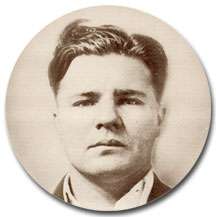 |
1904–1934 | Floyd was an American bank robber and killer, romanticized by the press and by folk singer Woody Guthrie in his song "Pretty Boy Floyd". Time magazine listed his first robbery as $3.50 in pennies from a local post office at the age of eighteen. He was arrested and convicted of payroll robbery three years later.[2][5][9] |
| Ralph Fults | No image available |
1911–1993 | Fults was a Depression-era outlaw and escape artist associated with Raymond Hamilton, Bonnie Parker and Clyde Barrow of the Barrow Gang.[2][5] |
| Richard Galatas | No image available |
A known associate of Frank Nash, he was involved in the scheme to free Nash from the FBI's custody in what became known as the Kansas City massacre. Later sent to Alcatraz.[10] | |
| Roy Gardner | No image available |
1886–1938 | Gardner was once America's most infamous prison escapee and the most celebrated outlaw and escaped convict during the Roaring Twenties.[2][10] |
| Russell "Slim Gray" Gibson | No image available |
d. 1935 | Gibson was an American bank robber and Depression-era outlaw associated with Alvin Karpis and the Barker Gang during the late 1920s and 1930s.[2][10] |
| Fred "Shotgun" George Ziegler Goetz | No image available |
1896–1934 | Goetz who was also known as "Shotgun" George Ziegler, "George B. Seibert", George Zeigler" and was a Chicago Outfit mobster and a suspected participant in the Valentine's Day Massacre, in 1929 and Kansas City Massacre.[2][10] |
| Eddie Green | No image available |
1898–1934 | Green was best known as a member of the John Dillinger gang. He was also associated with Frank "Jelly" Nash, Volney Davis and the Karpis-Barker Gang in his early career.[2][10] |
| Floyd Garland Hamilton | No image available |
1908–1984 | Brother of Raymond Hamilton, he was the driver for the Barrow Gang during the early 1930s. He was the mastermind in the attempted escape from Alcatraz in 1943.[2][10] |
| John "Red" Hamilton | 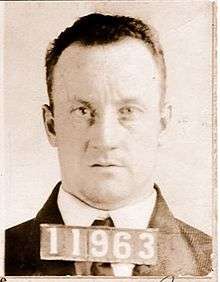 |
1899–1934? | Hamilton was a Canadian criminal and bank robber active in the early 20th century, most notably as a criminal associate of John Dillinger.[2][10] |
| Raymond Hamilton | No image available |
1913–1935 | Brother of Floyd Hamilton, he was a member of the notorious Barrow Gang during the early 1930s. By the time he was 21 years old he had accumulated a prison sentence of 362 years. He was executed by electric chair in 1935.[2][10] |
| Thomas J. Holden and Francis L. Keating | No image available |
1896–1953 (Holden) 1899–1978 (Keating) |
Led by Thomas James Holden (1896–1953) and Francis Keating (1899-July 25, 1978), which was active in the Midwestern United States during the 1920s and 1930s. Holden was described by a spokesman for the FBI as "a menace to every man, woman and child in America" and was the first fugitive to be officially listed on the FBI's Top Ten Most Wanted List in 1950.[2] |
| Alva-Dewey Hunt and Hugh Gant | No image available |
A Depression-era outlaw group led by Alva-Dewey Hunt and Hugh Gant which was active during the mid-to late 1930s. Although largely unknown on a national scale, their Midwest counterparts receiving the focus of the media, they were the only gang to operate south of the Mason–Dixon line and robbed countless banks throughout the Southeastern United States[2][10] | |
| Elmer H. Inman | No image available |
1880–1939 | He was an American criminal, bank robber, jewel thief and Depression-era outlaw. At one time considered Oklahoma's "Public Enemy No. 1", he was a member of the Kimes-Terrill Gang and associated with Herman Barker and Wilbur Underhill, Jr. throughout the early-1930s.[2] |
| Eleanor "The Blonde Tigress" Jarman | No image available |
1904–? | Jarman was involved in a robbery with George Dale and Leo Minneci, in which Dale shot the shop owner. They were all captured and Jarman and Minneci were sentenced to jail but Jarman escaped custody and her whereabouts remain unknown.[2] |
| Charles E. Johnson | Johnson was a New York burglar who was listed on the FBI's Ten Most Wanted during 1953 for his robbery of a bank robber, who implicated him when he was captured.[2][10] | ||
| Enoch L. Johnson | No image available |
1883–1968 | Johnson was an Atlantic City, New Jersey political boss and racketeer. From the 1910s until his imprisonment in 1941, he was the undisputed “boss” of the Republican political machine that controlled Atlantic City and the Atlantic County government.[2][10] |
| William Daniel Jones |  |
1915–1974 | Jones ran with Bonnie and Clyde for eight and a half months, from Christmas Eve 1932 to early September 1933. He was one of two gang members who were consolidated into the "C. W. Moss" character in the 1967 film Bonnie and Clyde.[2][10] |
| Alvin "Old Creepy" Karpis |  |
1908–1979 | Nicknamed "Creepy" for his sinister smile and called "Ray" by his gang members, he was an American criminal known for his alliance with the Barker gang in the 1930s. He was the last "public enemy" to be taken and served the longest sentence of any prisoner at Alcatraz (26 years).[2][10] |
| George "Machine Gun" Kelly | 1895–1954 | Kelly was an American gangster during the prohibition era.[1][2] His nickname came from his favorite weapon, a Thompson submachine gun. His most famous crime was the kidnapping of oil tycoon and businessman Charles Urschel in July 1933 for which he and his gang earned $200,000 ransom.[1][2] | |
| John Allen Kendrick | No image available |
1897–? | He was an American criminal, escape artist, bank robber and member of the Tri-State Gang whose career spanned four decades. He was listed on the FBI's Top Ten Most Wanted in late-1955, and was apprehended by the Federal Bureau of Investigation that same year.[2] |
| Matthew Kimes and Ray Terrill | No image available |
1906–1945 (Kimes) 1900–? (Terrill) |
A bank robbing gang, led by Matthew Kimes and Ray Terrill, that was active in the Midwestern United States during the 1920s. The gang was known, not only for their high-profile robberies, but for their frequent escapes from prison. The members were alleged to have sworn a blood oath to free each other from jail, should they ever be captured, or die in the attempt.[2][10] |
| Jean LaBanta | No image available |
1879–? | LaBanta was an American criminal, forger and train robber. It was partly due to his robberies that the Southern Pacific Railroad company first began arming its guards.[2] |
| Herman K. "Baron" Lamm |  |
1890–1930 | Also known as Baron Lamm, he was a German American bank robber. He is widely considered one of the most brilliant and efficient bank robbers to have ever lived, and has been described as "the father of modern bank robbery".[2][10] |
| Hyman S. Lehman | No image available |
Lehman was an American gunsmith and armorer. He provided specialized and custom made weaponry to countless bank robbers and outlaws during the Great Depression. In 1941, Lehman retired from gunsmithing and remained in San Antonio designing custom boots and saddles until his death.[2] | |
| Clarence Lieder | No image available |
1906–1969 | He was a mechanic and armorer for Chicago's underworld and Depression-era criminals, as well as the primary competitor to Joe Bergl. Lieder competed with Bergl in supplying both mobster and other criminals with customized automobiles throughout Prohibition and during the early-1930s.[2][10] |
| Wilhelm Loeser | No image available |
1876–1935 | Loeser was an American physician and pharmacist who provided medical care to underworld figures during the "Public enemy"-era of the 1930s. His most famous clients were John Dillinger and Homer Van Meter who hired him to perform plastic surgery on them.[2][10] |
| Henry Loftus and Harry Donaldson | No image available |
Two young men who made national headlines for their unsuccessful attempt to rob the Southern Pacific Railroad's "Apache Limited" in 1937. The last major train robbery in the United States, the two have been referred to as "the last of America's classic train robbers".[2] | |
| James C. "Tex" Lucas | No image available |
1912–1963 | Texas bank robber and car thief. Later sent to Alcatraz, he attempted to escape from the island in 1938.[10] |
| Charles Makley | No image available |
1889–1934 | [2][11] |
| Ben Golden McCollum | No image available |
1909–1963 | McCollum was an outlaw in Oklahoma during the 1920s who was nicknamed the "Shiek of Boynton". McCollum robbed banks in both Prague, Oklahoma (where he got away with $3400) and Checotah, Oklahoma ($4700) in 1929. He was captured on the streets of Boynton, Oklahoma shortly after the Checotah heist.[2][11] |
| Henry Methvin |  |
1912–1948 | He was an American criminal, bank robber and Depression-era outlaw. He is best remembered as the final member of the Barrow gang and whose father, Ivan Methvin, helped arrange their deaths at the hands of a posse headed by Texas lawman Frank Hamer in 1934.[2][11] |
| Vernon C. Miller | 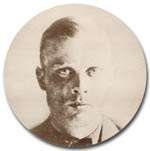 |
1896–1933 | Miller was a freelance Prohibition gunman, bootlegger, bank robber and former sheriff in South Dakota who, as the only identified member of the Kansas City Massacre, was found beaten and strangled to death shortly after the incident.[2][11] |
| William "Billy the Killer" Miller | No image available |
1906–1931 | As an American bank robber and Depression-era outlaw, he committed numerous bank heists in Michigan, Ohio, Kentucky and Oklahoma, and teamed up with George Birdwell and Pretty Boy Floyd during the early 1930s.[2] |
| Joseph P. Moran | No image available |
1905–1934 | Moran was a doctor known for catering to the Depression-era criminal underworld in the early 20th century. He was also a peripheral member of the Barker-Karpis gang and it was this association that Karpis later stated led to Moran's murder by Fred and Arthur "Doc" Barker.[2][11] |
| Frank Mulloy | No image available |
Convicted for his alleged role in the Kansas City Massacre and spent time in Alcatraz.[11] | |
| Edna "Rabbits" Murray | No image available |
d. 1966 | She was a Depression-era outlaw and partner of Volney Davis during the early 1930s. Although popularly known to the press as the "Kissing Bandit" for her habit of kissing male robbery victims, she was known in the underworld as "Rabbits" for her skill as an escape artist.[2][11] |
| Frank "Jelly" Nash | No image available |
1887–1933 | Nash has been called “the most successful bank robber in U.S. history,” but he is most noted for his violent death in what has become known as the Kansas City Massacre in 1933.[2][11] |
| George "Baby Face" Nelson |  |
1908–1934 | Lester Joseph Gillis, known under the pseudonym George Nelson, was a bank robber and murderer in the 1930s. Nelson was responsible for the murder of several people, and has the dubious distinction of having killed more FBI agents in the line of duty than any other person. He was shot by FBI agents and died after a shootout often termed "The Battle of Barrington".[2][11] |
| Donald Phoenix | No image available |
d. 1944 | Member of the Barker-Karpis Gang, Phoenix later died in Alcatraz.[11] |
| Harry "Pete" Pierpont | 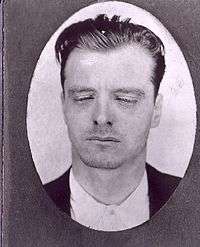 |
1902–1934 | Peirpont was a Prohibition era gangster. He is perhaps most noted for being a friend and mentor of John Dillinger.[2][11] |
| Adam "Eddie" Richetti | 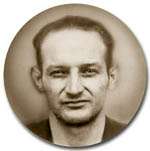 |
1909–1938 | Richetti was an American criminal and Depression-era bank robber. He was associated with Aussie Elliott and later Pretty Boy Floyd in the early-1930s, both he and Floyd later being implicated in the Kansas City Massacre in 1933.[2][11] |
| Verne Sankey and Gordon Alcorn | No image available |
1890–1934 | Sankey and Gordon Alcorn were a pair of Depression-era outlaws whose successful kidnappings of Haskell Bohn and Charles Boettcher II in 1932 made them two of the most wanted criminals in the United States. Sankey was initially a suspect in the Lindbergh baby kidnapping but was cleared after an investigation by the FBI.[2][12] |
| Harry Sawyer | No image available |
Member of the Barker-Karpis Gang. Later sent to Alcatraz.[12] | |
| James Franklin Sawyer | No image available |
1899–1979 | Sawyer was an American Depression-era bank robber and prison escapee. Although he was responsible for several bank robberies in Kansas and Oklahoma, he was wrongfully imprisoned for a 1932 bank robbery in Fort Scott, Kansas and spent almost 40 years in prison before he was pardoned by Governor Robert Docking in 1969.[2] |
| Walton Spark | No image available |
An accomplice in John Dillinger's escape from an Indiana jail in 1934, Spark was imprisoned and sent to Alcatraz.[12] | |
| William Francis Sutton |  |
1901–1980 | Sutton was a prolific U.S. bank robber. During his forty-year criminal career he stole an estimated $2 million, and eventually spent more than half of his adult life in prison. After his release, he spoke about prison reform and consulted with banks on anti-robbery techniques.[2][12] |
| Nicholas "Chaw Jimmie" Trainor | No image available |
d. 1922 | On the afternoon of December 18, 1922 when five men hijacked a Federal Reserve Bank delivery truck outside the U.S. Mint in Denver, Colorado. None of the gunmen were ever identified, with the exception of 36-year-old Nicholas "Chaw Jimmie" Trainor who was killed during the shootout with the U.S Mint Police, and they successfully escaped with $200,000.[2] |
| Wilbur "Mad Dog" Underhill, Jr. | No image available |
1901–1934 | Often called "Mad Dog" or the "Tri-State Terror", he was an American criminal, burglar, bank robber and Depression-era outlaw. He was one of the most wanted bandits in Oklahoma during the 1920s and 1930s and co-led a gang with Harvey Bailey that included many fellow Cookson Hills outlaws including Jim Clark, Ed Davis and Robert "Big Bob" Brady.[2][12] |
| Homer "Wayne" Van Meter | 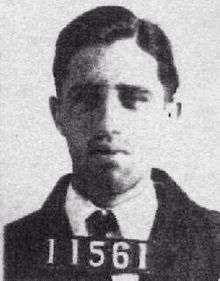 |
1906–1934 | He was an American criminal and bank robber active in the early 20th century, most notably as a criminal associate of John Dillinger and Baby Face Nelson.[2][12] |
| Huron "Terrible Ted" Walters | No image available |
1913–1971 | Arkansas bank robber and one time associate of Floyd Hamilton. Walters was sent to Alcatraz and attempted to escape in 1943. Killed by a Texas Ranger during a hostage situation in 1971.[12] |
| Otto Wood | No image available |
1894-1930 | A Depression-era desperado, born in Wilkes County, N.C. in 1894. |
| Richard Whittemore | No image available |
1898–1926 | Led by Richard Reese Whittemore, the gang went on a year-long crime spree committing payroll, bank and jewelry robberies in Maryland and New York before their capture in 1926.[2][12] |
References/Sources
- 1 2 3 4 5 6 7 8 9 10 11 12 13 14 15 16 17 18 19 20 21 22 "Prohibition Era Gangsters & Outlaws – Page 1". 20th Century America: Prohibition and Depression Era Gangsters & Outlaws. LegendsofAmerica.com. 2003. Retrieved 20 April 2010.
- 1 2 3 4 5 6 7 8 9 10 11 12 13 14 15 16 17 18 19 20 21 22 23 24 25 26 27 28 29 30 31 32 33 34 35 36 37 38 39 40 41 42 43 44 45 46 47 48 49 50 51 52 53 54 55 56 57 58 59 60 61 62 63 64 65 66 67 68 69 70 71 72 73 74 75 76 77 78 79 80 81 82 83 84 85 Newton, Michael (September 2002). Encyclopedia of Robbers, Heists, and Capers. Facts On File Inc. ISBN 0-8160-4488-0.
- ↑ Wellman, Paul (1961). A Dynasty of Western Outlaws. New York: Bonanza Books. ISBN 0-8032-9709-2.
- ↑ Helmer, William; Bilek, Arthur (2007). The St. Valentine's Day Massacre: The Untold Story Of The Bloodbath That Brought Down Al Capone. Nashville, Tennessee: Cumberland House. ISBN 1-58182-549-8.
- 1 2 3 4 5 6 7 8 9 10 11 12 13 14 15 16 17 18 19 20 21 22 23 24 "Prohibition Era Gangsters & Outlaws – Page 2". 20th Century America: Prohibition and Depression Era Gangsters & Outlaws. LegendsofAmerica.com. 2003. Retrieved 20 April 2010.
- ↑ Jeffers, H. Paul (1993). Gentleman Gerald: The Crimes and Times of Gerald Chapman, America's First Public Enemy No. 1. St. Martin's House. ISBN 0-312-13500-9.
- ↑ Temple Universities Library. "Potable Power: Delaware Valley Bootlegging During Prohibition". Retrieved 3 January 2011.
- ↑ "Special Agent Edwin C. Shanahan". The Officer Down Memorial Page. ODMP.org. 2008. Retrieved 2009-11-22.
- ↑ King, Jeffrey. The Life and Death of Pretty Boy Floyd. Kent, Ohio: Kent State University Press, 1999. ISBN 0-87338-650-7
- 1 2 3 4 5 6 7 8 9 10 11 12 13 14 15 16 17 18 "Prohibition Era Gangsters & Outlaws – Page 3". 20th Century America: Prohibition and Depression Era Gangsters & Outlaws. LegendsofAmerica.com. 2003. Retrieved 20 April 2010.
- 1 2 3 4 5 6 7 8 9 10 11 12 "Prohibition Era Gangsters & Outlaws – Page 4". 20th Century America: Prohibition and Depression Era Gangsters & Outlaws. LegendsofAmerica.com. 2003. Retrieved 20 April 2010.
- 1 2 3 4 5 6 7 8 "Prohibition Era Gangsters & Outlaws – Page 5". 20th Century America: Prohibition and Depression Era Gangsters & Outlaws. LegendsofAmerica.com. 2003. Retrieved 20 April 2010.
External links
- Public Enemy #1 Gallery: Depression-Era Desperadoes
- Gangsters vs. Outlaws
- Booknotes interview with Bryan Burrough on Public Enemies: America's Greatest Crime Wave and the Birth of the FBI, 1933-34, September 19, 2004.
This article is issued from Wikipedia - version of the 11/21/2016. The text is available under the Creative Commons Attribution/Share Alike but additional terms may apply for the media files.